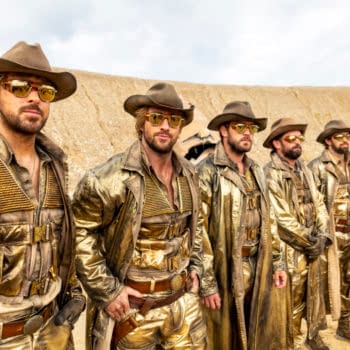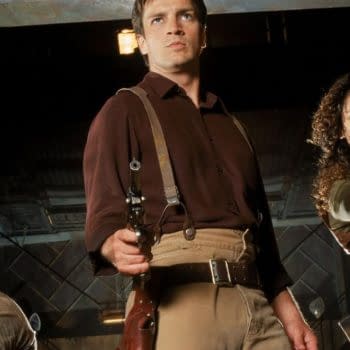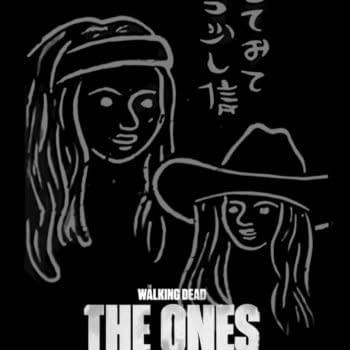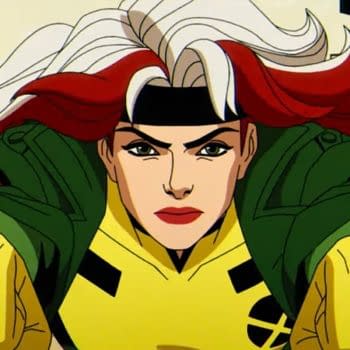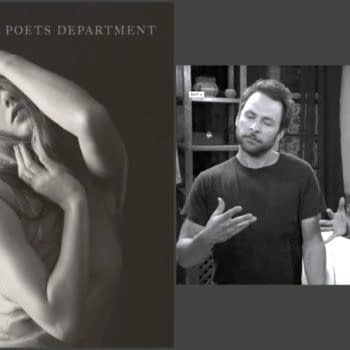Posted in: Movies, TV | Tagged: Adam Goldberg, Alison Tollman, billy bob thornton, colin hanks, entertainment, fargo, film, frances mcdormand, fx, martin freeman, Molly Solverson, noah hawley, Oliver Platt, Peter Storemare, Russel Harvard, steve buscemi, There Will Be Blood, tv, William H. Macy
Is FX's Fargo A Sequel, Not A Remake?
By Ed Saul
Hola, fellow internet television nuts!
Everyone who writes for Bleeding Cool seems to have garnered for themselves a favorite new drama series which they recommend to pretty much any sentient being that will listen. I myself have grown massively interested in the new 'reimagining' of the classic Coen Brothers film Fargo, with Alison Tollman, Billy Bob Thornton, Colin Hanks and Martin Freeman in the lead.
The series has been marketed as a remake, using the themes, setting and character types of the film but with a brand-new plot set close to the modern day. It stays true to the original work's mission statement, being based on crazy stories that you hear which seem too good to not be true: in the film, a man famously shoves another man into a wood chipper to dispose of his body, while in the series a woman admits to a nest of spiders erupting from her partner's neck during sex.
Additionally, there have been little flavors of the Coen Brothers' other celebrated works tossed in here and there: a rugged, devilish anti-hero that no-one can stop (No Country For Old Men, Raising Arizona, etc.), a dorky personal trainer who makes an inept attempt at blackmail (Burn After Reading), and a number of actors of Asian descent given very little to do (literally every Coen Brothers movie. They have a problem with Asians).
However, the marketing, like the film, is a deliberate mislead. Fargo – the TV series – is not a remake of Fargo – the film. It's a sequel.
I'll explain.
My curiosity was first piqued by the fact that each episode of the series opens with a message identical to that opening the film:
Except for three small differences. Firstly, it's split into three; secondly, the word "TRUTH" takes a couple seconds longer to fade out than the rest of the first sentence:
and lastly:
Obviously the date has been changed to give the story a little more relevance, but here's a thing: why set it exactly 10 years after the release of the film? Why not jump a year later, in 2007, making it a round 30 years after the events of the film were meant to take place?
The slow-fading "TRUTH" is another perplexing detail, until you take into account the challenge set for the creators of the series: it has already been well-publicized that the Coen Brothers were cheekily fooling us with that original message. The story is not at all 'true' except for having been based on rumours and fringe news stories, the kind which get a single paragraph in the middle of a newspaper and are rarely if ever followed up on.
So the TV series has a different mission: playing smoke-and-mirrors with the audience, creating a story which seems so "true" and "realistic" that audience members unfamiliar with the film might be properly fooled.
An ideal example of this comes in Mr. Wrench, a deaf hit-man played by deaf actor Russel Harvard, whom you might remember as the grown-up HR Plainview in There Will Be Blood. Wrench's ASL dialogue is never subtitled, so that we are forced to guess that he's making horrible threats unless otherwise notified by his translator, Adam Goldberg as fellow hit-man Mr. Numbers.
However, an eagle-eyed Reddit user has revealed that the entire thing is a joke on us, as well as the other characters: Mr. Wrench is concerned about jumping swordfish and thinks Martin Freeman is a tiny man.
So we've established that Noah Hawley and co. are just playing silly buggers with us. "How," you cry, "how does that prove the story is a sequel?!". Allow me to explain.
In the climax of the film, Steve Buscemi's belligerent criminal Carl Sholwater takes a little surplus to his share of the kidnap money owed to him by Jerry Lundegaard (William H. Macy), putting it in a suitcase and burying it in the snow beneath a highway fence.
Sholwater has a problem: when he looks left and right, the fence looks pretty much the same from every angle. So, thinking quickly, he marks it out with a red snow-scraper.
Thereafter, he rejoins his partner-in-crime, the taciturn Gaer Grimsrud (Peter Stormare), before meeting his doom and a wood chipper. The remainder of the money disappears for the rest of the movie, as the only person who could possibly tell Frances McDormand's chipper law enforcer, Marge Gunderson, where it is has been dead for some time when she catches Grimsrud in the act of disposing of his body.
This was the ultimate punchline of the Coen Brothers' fantastic practical joke on 90s' moviegoers: the idea that a fortune lay buried in the snow near Fargo and Brainerd, and would probably rot there beneath a red snow-scraper. (In a bizarre twist on the above-mentioned "Truth" intent of the film, in 2001 a tabloid paper blamed a young Japanese woman's death on the film, claiming erroneously that she had frozen to death while searching for the money.)
Fast-forward 10 years to the setting of the TV series, and we find Thornton as Lorne Malvo tending to a plot development which seemingly had nothing to do with the movie: helping Oliver Platt as Stavros Milos, a Greek-descended supermarket mogul, with a blackmail problem while surreptitiously gas-lighting the poor man in an effort to find out what his blackmail note meant by "I know about the money" – something which not even the blackmailer actually knows.
Except when questioned about it in the latest episode – "A Muddy Road" – Stavros dismisses the idea that anyone could know about his secret – that "nobody can know. It's impossible!", though he doesn't elaborate. It's a scene which opens in his office, with Malvo staring at a framed object…
…a red snow-scraper.
Suddenly this plot thread ties back in with the rest of the story, and uncannily connects the series as a direct continuation of the film. Stavros claims to have started his business with a loan from his Uncle, but the implied truth – which will likely be revealed to us in coming instalments – is this: by pure dumb luck, he stumbled upon the red snow-scraper left by Buscemi next to the fence, and thereafter the suitcase of money left there by Carl Sholwater in 1987, which he used for his own devices. To him, it's "impossible" that anyone would know where he got it because he found it in the middle of nowhere (as the film's tagline promises, "A lot can happen in the middle of nowhere"), and had no idea where it came from.
Still not convinced? Well, Hawley has another little 'clue' to add. The final scene of the episode – in which Stavros' shower is laced with pig's blood – comes with narration from Malvo, who is pretending to be a priest, in the form of a reading from the book of Exodus, Chapter 2, Verse 5-15, KJV. It's seemingly incongruous, apart from the obvious connection of Moses later turning the Nile to Blood, until you examine the final lines of Malvo's reading, said just as Stavros gets a dollop of blood right in his face:
"One day, after Moses had grown up, he went out to where his own people were and watched them at their hard labor. He saw an Egyptian beating a Hebrew, one of his own people. Looking this way and that way and seeing no people, Moses slew the Egyptian and hid him in the sand."
Huh. So…whom else "looked this way and that" before burying a secret? Someone else with blood on his face?
I'll tell you this, I never pegged Steve Buscemi as a very Moses-like person, though his brother did play God in one of the better episodes of Nurse Jackie, which he also directed.
So: the numerous opening shots of a snowy fence in the TV series are more significant than we previously realised, and the story is, in fact, a secret sequel (secretquel?) to its original. Where they're going with this, I'd like to know…in fact, I wouldn't be surprised if Marge Gunderson might be name-dropped in a future episode. By 2006, with that belly-bump of hers now become a 19-year-old kid, might she be nearing retirement? Could we even see McDormand making an unscheduled cameo appearance, helping out the similarly-plucky Molly Solverson, played by Alison Tollman?
A lot can happen in the middle of a TV series…
Blood has been shed, Jerry. Blood has been shed. Ask Ed Saul about whose, how much and where to dispose of the bodies at http://aboxofbones.com.




























